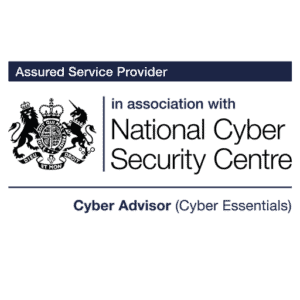Speak to an expert
Speak to an expert
Cyber threats are rising, yet many UK organisations still see cybersecurity as a technical task. In truth, it must be a shared mindset across the business.
According to the UK Cyber Security Breaches Survey 2025, 43% of businesses faced a cyberattack in the past year. For medium and large firms, the rate jumps to over 70%. Worryingly, 93% of incidents involved phishing – a tactic that targets people, not systems.
This tells us one thing: technical defences aren’t enough. To stay protected, businesses need a strong security-first culture.
Most attacks succeed because of human error. Despite rising threats, only 28% of UK businesses performed a cyber risk assessment in the last 12 months. Even fewer had defined security policies or reporting channels.
This gap reflects a deeper issue – a lack of ownership and clarity. When staff don’t see cybersecurity as their responsibility, or how to act on concerns, breaches are more likely.
Culture is the key. When security becomes part of your company’s DNA, supported by policy and process, you reduce risk from the inside out.
A security-first culture means that everyone, not just IT, plays a role in keeping the business safe.
It includes:
In short, security is no longer a checklist. It’s a way of working.
Strong culture starts with strong leadership. Yet the 2025 survey shows only 14% of firms give board-level cyber updates. And just 6% link cyber risk to broader business risk.
This is worrying. If the board isn’t engaged, no one else will be.
Leaders must own cyber risk. They should speak about it in meetings, invest in it strategically, and link to wider governance efforts. Additionally, clear escalation paths and defined roles help staff know where to turn when something feels off.
Many businesses deliver security training. However, training alone doesn’t change behaviour.
For real change, employees need:
Psychological safety is critical. When people know how and where to report issues – and trust they won’t be blamed – they’re more likely to act.
A strong culture depends on confident, well-informed teams. That’s why many businesses are embedding interactive, role-specific cyber awareness programmes into daily operations – helping staff recognise and respond to real-world threats more effectively.
Cybersecurity can’t sit in a silo. It should be embedded in every process in every corner of the organisation.
For example:
In addition, formal policies and response plans ensure consistent action when something goes wrong. This approach turns security into a business-wide habit, not a bolt-on.
At the same time, understanding where vulnerabilities lie is essential. Regular audits that span systems, processes, and people can surface hidden risks before attackers do – providing a clear picture of where to focus efforts.
Of course, change is hard. Many staff see cyber rules as annoying or irrelevant.
To overcome resistance:
Moreover, businesses should avoid a blame culture. Mistakes are learning opportunities, not grounds for punishment.
You can’t improve what you don’t track. Set clear goals and monitor progress.
Key metrics might include:
Over time, these metrics reveal cultural maturity and guide continuous improvement.
Of course, even with the best internal practices, threats don’t keep office hours. That’s why some organisations are turning to managed detection and response solutions, ensuring expert monitoring, real-time alerts, and rapid incident response – day and night.
Firewalls and software matter. But they can’t stop a careless click or a missed warning sign.
A strong culture, on the other hand, builds lasting defence. With governance frameworks, clear reporting processes, and widespread awareness, every employee becomes a line of defence.
The 2025 cyber landscape is unforgiving. But culture gives businesses a fighting chance. With the right mindset, every employee becomes part of the solution.
Cybersecurity is everyone’s job. It’s time to act like it.
Get in touch with our expert consultants for straight-talking, jargon-free technical security advice.











